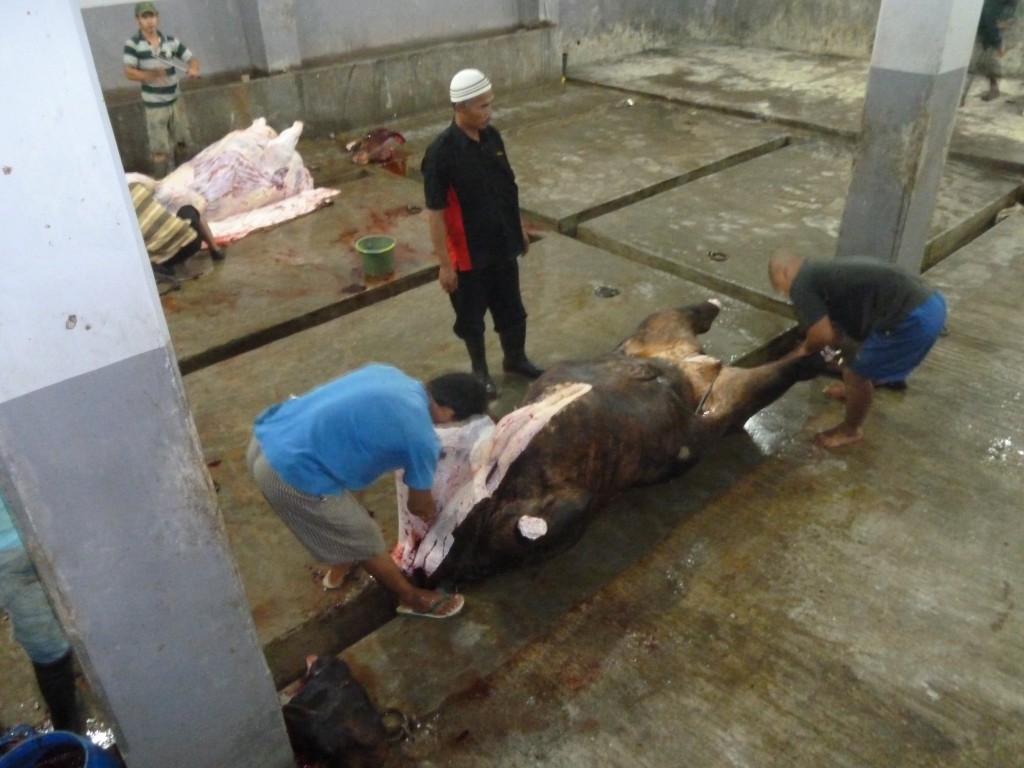Inside an Indonesian abattoir
Host: Lisa Wood/ AGP Indonesia
Written by Lisa Wood – Traceability Officer, AGP.
Today is the day we go to the Indonesian abattoir. This is the day that I know some have been waiting for, while personally, I have been dreading. I am not looking forward to the deluge of hate comments that are sure to follow.
I believe that an animal can be treated with kindness while still being destined for a plate. I believe an animal should be granted a quick slaughter with limited fuss. Personally, I do not like full, 180° rotation, full inversion (dorsal recumbent) slaughter boxes. I feel that the 90° inversion boxes offer a compromise between belief, worker safety and quick cutting. My personally preferred method is stunning prior to slaughter; yet I understand that there are religious beliefs to consider with this method also.
Now that’s out of the way, let’s continue.
During their time at the feedlots, amidst the processes of pen cleaning and weighing, the cattle will gradually make their way via numerous pens to the pens closest to the crush and the truck loading area. This is a process of approximately four months.
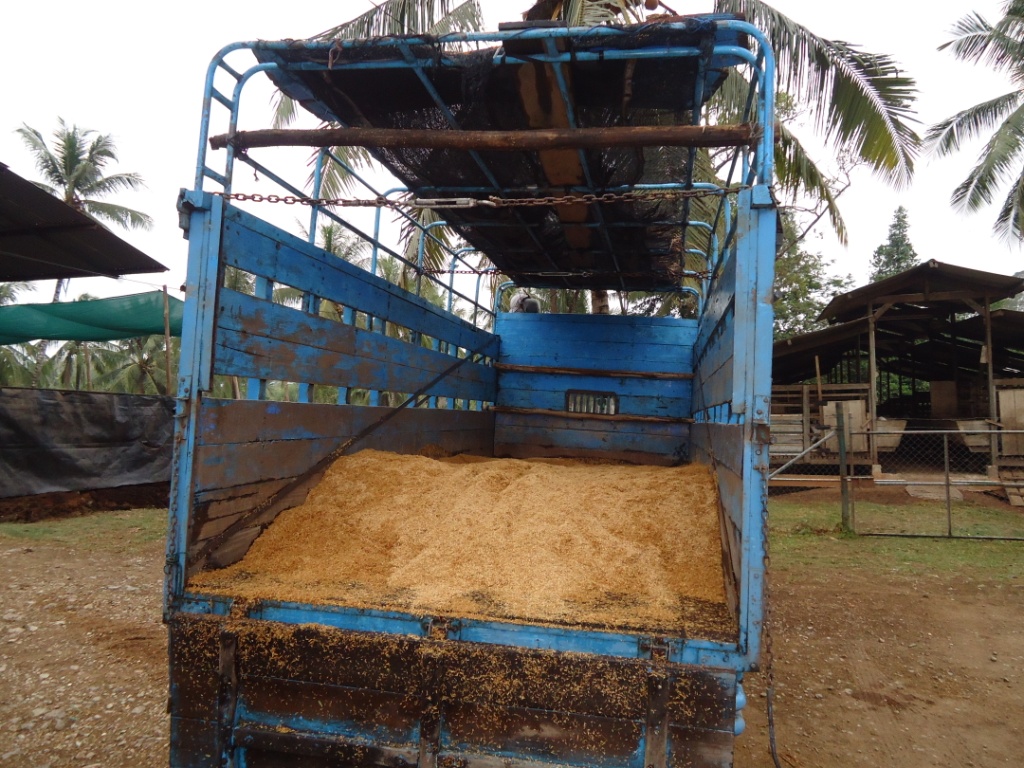 Truck with sawdust bedding for transporting to the abattoir.
Truck with sawdust bedding for transporting to the abattoir.
We will receive an order that abattoir ‘X’ would like to buy ten head of cattle for example (the number varies). The guys at the yard will bring ten head up to the crush to be weighed and their RFID number and visual tag number recorded. After this the cattle will be loaded onto a truck.
The truck will stop at the weighbridge where the delivery docket is printed with additional details of destination and truck registration number. This will be handed to the abattoir upon delivery of the cattle, where the purchaser (abattoir owner) and our AWO (Animal Welfare Officer) will check the details of the docket (cattle dispatched) against the actual cattle received.
After the cattle have been unloaded they are rested, in pens, with access to feed and water.
At some abattoirs here, the abattoir owner buys the cattle, and then sells these to the butchers that use his premises. Other abattoirs employ their own slaughter men. By the time an Australian animal gets to the abattoir it may have been bought and sold a minimum of three to four times, possibly more. However, the animals always remain within the ESCAS (Exporter Supply Chain Assurance System) at all times.
Abattoirs here kill to demand. If only two butchers or wet market stall holders want one cow each, then only two head are slaughtered. In rural Indonesia, there is not the infrastructure to hold chilled meat for an extended period of time. Small abattoirs will kill during the night, starting after midnight, so the meat is fresh when it gets to the market ready for sale at 5 am. Most beef will have sold out in the wet market before noon.
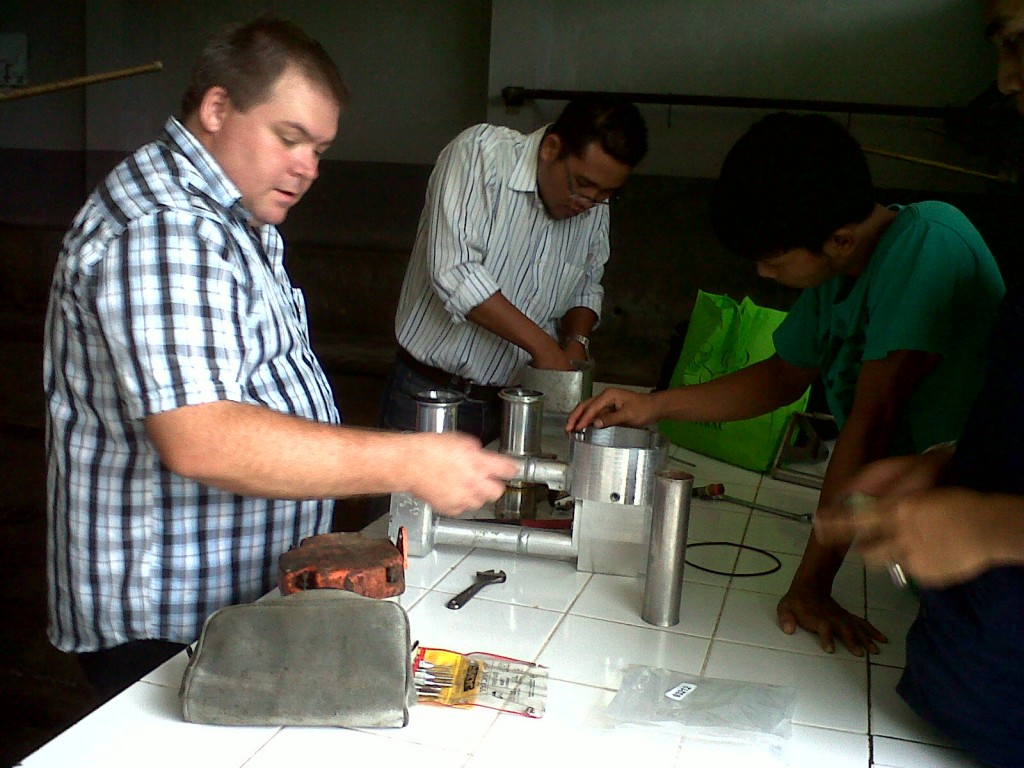 Scott from Kentmaster Australia running a ‘Stunner Maintenance Class’.
Scott from Kentmaster Australia running a ‘Stunner Maintenance Class’.
All of the abattoirs we supply to use pneumatic stunners, and we actually supplied the pneumatic stunners. All of the abattoirs also have back-up generators for the times when the power goes out. They have also been supplied with Cash Knockers – hand held stunners that are used as back-up equipment should anything happen to the pneumatic system.
2011 and 2012 were very busy with training. Training is ongoing because of staff turnover at the abattoirs. Our AWO’s have stayed with us and are now quite skilled. As well as our CCTV cameras, they are the most important eyes on the floor. No, we will not be releasing any of our CCTV footage.
Every two months, I do a round, visiting all of the abattoirs in our supply chain. My co-worker Alim visits each place once at least once a month.
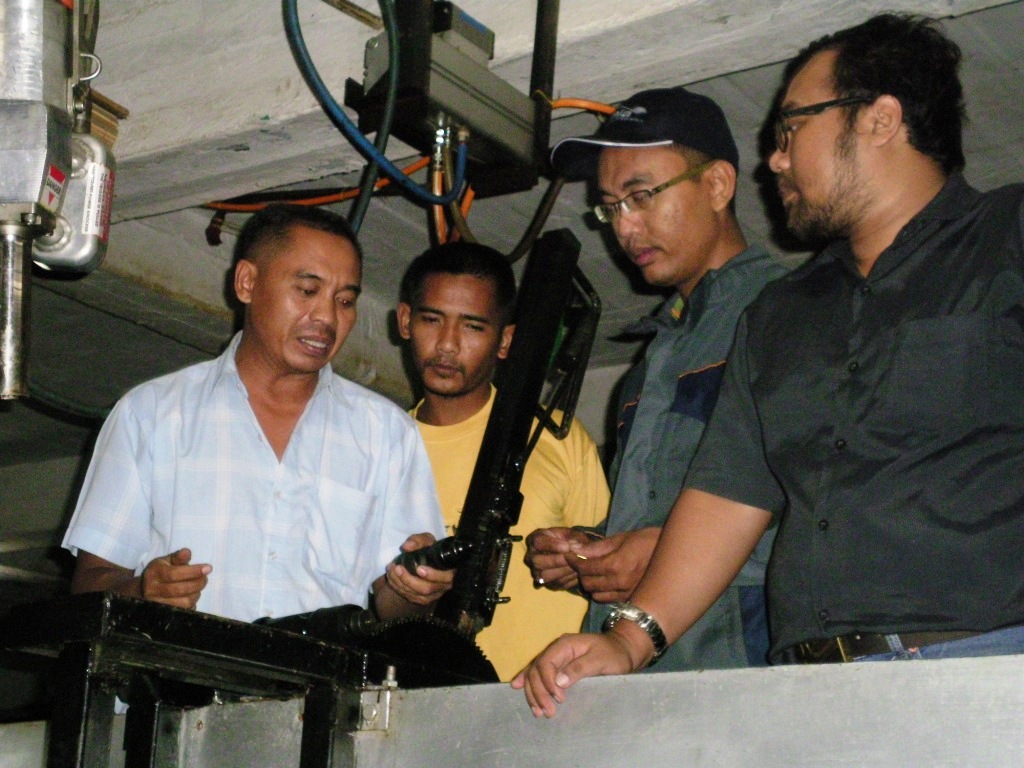 Some of our AWO’s having Cash Knocker training.
Some of our AWO’s having Cash Knocker training.
The handler or the AWO will walk the cattle from the pen through the race and into the stunning box. The back gate is shut and the cows head is caught in the head bail. This is to assist the stunner operator to get a good, stable shot. The stunner operator will stun the head. The AWO will check that the cow is unconscious, at which point the door is opened, the animal falls down and the slaughter man cuts the throat. While everyone is standing around waiting for the cattle to bleed out, the AWO will scan the RFID number. At the end of the night, the AWO will send that data through to us in the office, and we then report this information to the Exporter.
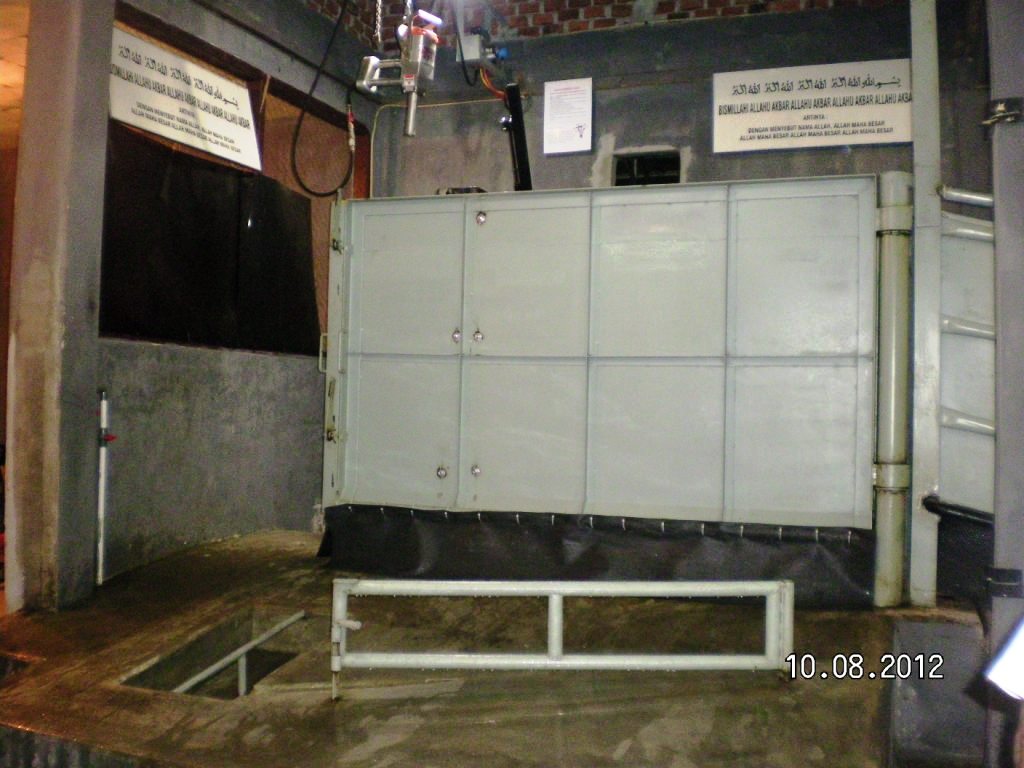 An example of the stunning box and stunner set-up in an abattoir we used to supply to. We don’t have enough cattle to supply them anymore.
An example of the stunning box and stunner set-up in an abattoir we used to supply to. We don’t have enough cattle to supply them anymore.
Using the stunning boxes and stunner, productivity is greatly increased, although the abattoir still kills as per demand. If one purchaser wants to kill/collect his carcass at 1 am, the workers will slaughter and process that animal at 12:30, and the other purchaser wants to collect his carcass at 2:30 am, the workers must wait for the time to pass.
Technically, one animal can be lead into the box and slaughtered every five minutes. In practice this is not generally the case, as mentioned above.
After the cow has been slaughtered, it is a very hands on butchering process. The majority of Indonesian abattoirs do not have the vast amount of tools and equipment that you will find in an Australian meatworks.
After the carcass has been quartered, every part of it is loaded onto the back of a ute and taken for sale. The majority of the animal is used for food, even the skin. A quite enjoyable snack food is deep fried skin – it’s a bit like pork crackle.
You can see a video from an abattoir by clicking here
I hope you’ve enjoyed my week of posts from Indonesia. Stay tuned as next week it’s a return to Aus and in the coming weeks we will have some stories from the Indonesian students on the NTCA Indonesia Australia Pastoral Industry Student Program.
Thanks for reading,
Lisa
Below are some additional photos from inside Indonesian abattoirs. These photos contain graphic images of cows and carcasses. The choice is yours to continue to scroll down or not.
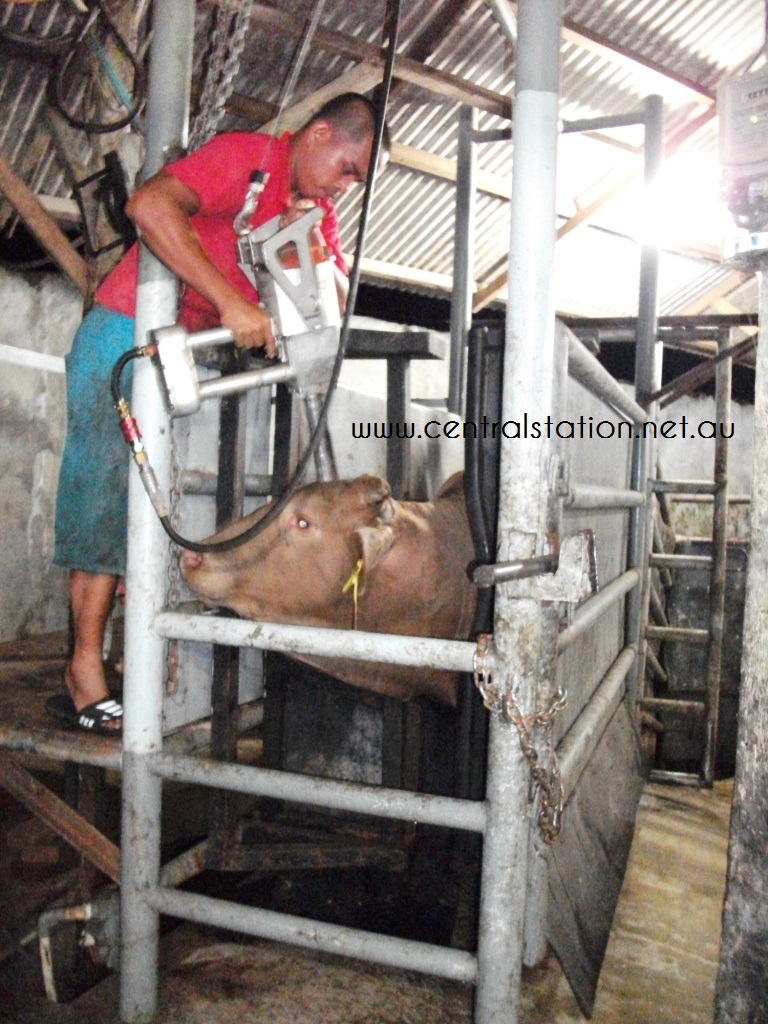 Cow in the box, with the head bale closed about to be stunned.
Cow in the box, with the head bale closed about to be stunned.
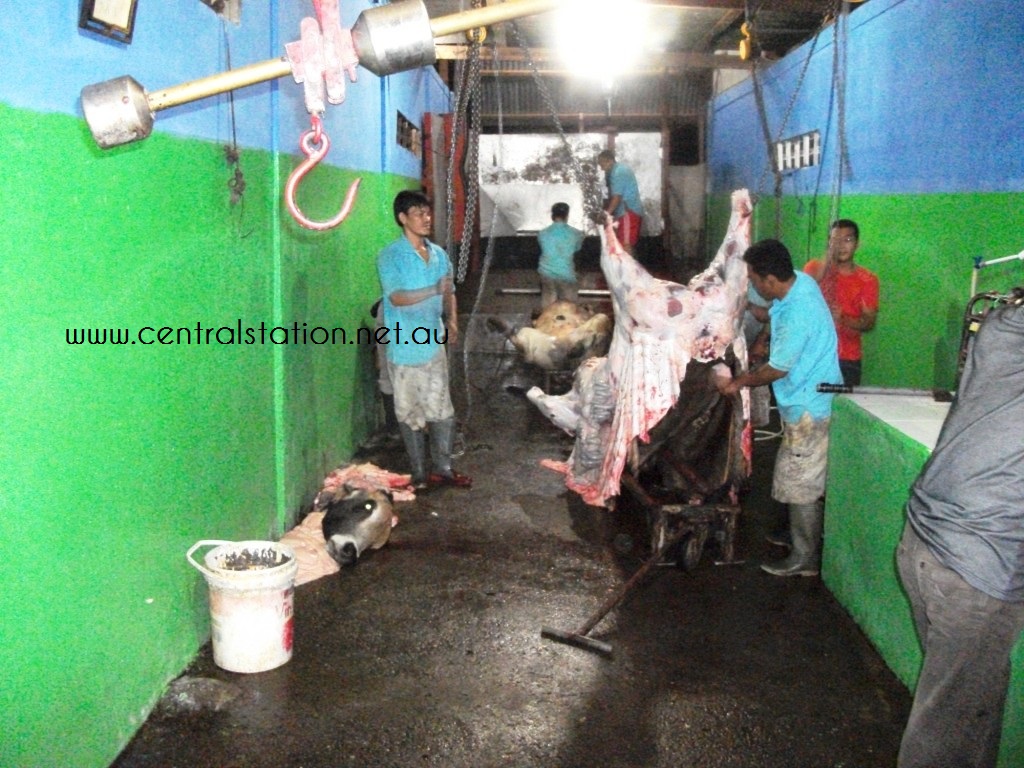 This facility could nearly be classed as ‘advanced’ because they have a hoist and a trolley cradle.
This facility could nearly be classed as ‘advanced’ because they have a hoist and a trolley cradle.
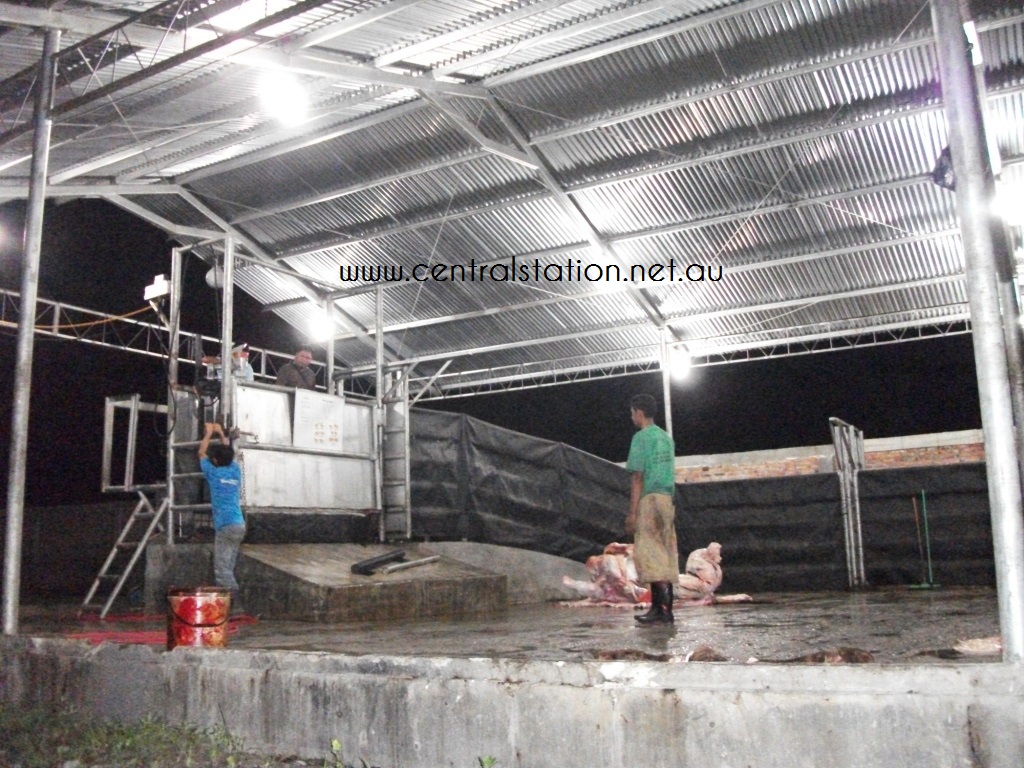 Comparison to the above where in this facility the carcass is processed on the floor.
Comparison to the above where in this facility the carcass is processed on the floor.


